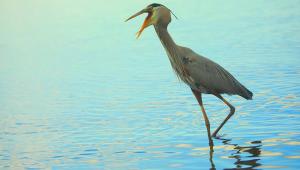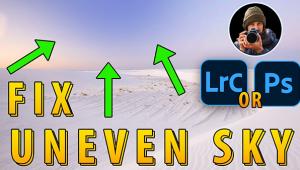How to Sell Your Fine Art Photography: Tips From Photographers For Making A Living From Your Art
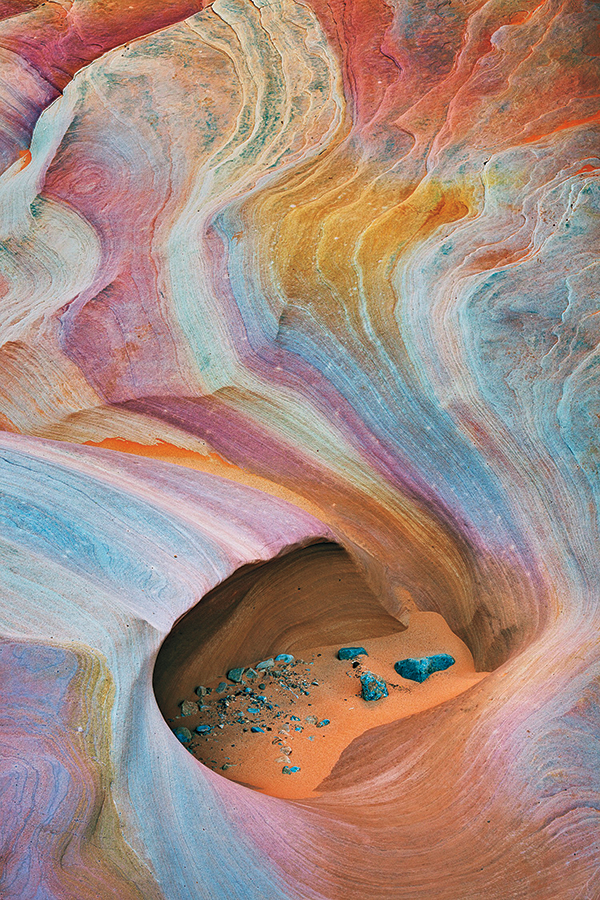
In this column we look at some of the business aspects of fine art photography: getting established, finding clients, looking for gallery representation, marketing techniques, and finding your style and direction. Special thanks to this month’s contributing photographers: Sean Bagshaw (Outdoor Exposure Photography, LLC), David Bowman, John Granata (John Granata Fine Art), Robin Hill, and Cheyenne L Rouse.

Shutterbug: What has been your experience in establishing yourself in the fine art photography world?
Cheyenne L Rouse: I have been shooting professionally since 1989. I began shooting adventure sports stock photography that I marketed myself as did my 10 worldwide stock agencies and did that quite successfully until 2002. After September 11, 2001, the stock photography market took a tumble and the world was going digital and I really wanted nothing to do with it. It was at that time I decided that I needed to take a break and decide what my next move would be. In 2008, I was “called” back into the photography business but this time I would pursue the fine art market. I had an opportunity to open a small gallery in Scottsdale. I opened and ran Ancient Light Gallery in 2010 and after a successful two-year run I decided I wanted to be more mobile and have more freedom to travel and lead photo workshops. Having a gallery is a huge commitment of time and resources and if you aren’t there sales don’t happen.
I decided art shows would be my next move so that is what I did. I learned as much as I could about the art show world and it was a pretty big learning curve. Many think it is as easy as setting up a booth and the sales start happening but it is much more involved than that. It has not been an easy road, but nothing in this business is an easy road. It takes hard work, determination, commitment, and lots of long hours but this is what I feel I was born to do so I keep at it show after show.


David Bowman: Room & Board (roomandboard.com) sells framed prints of my State Fair series online and in stores. National Geographic Creative (natgeocreative.com) has auctioned my work at Christie’s fine art auction house. National Geographic Creative is a stand-alone talent agency within National Geographic and has big plans for the future.
John Granata: I think it takes a lot of work and effort that doesn’t always equal reward. Artists view reward differently, some see it as dollars and others see it as visibility or recognition. I see it as both. If you produce work that speaks to somebody and they take it home that is an incredible compliment.
Robin Hill: Up, down, and up again. I have three branches to my work: architecture, design, and fine art, and the fine art segment of that trio is certainly the most volatile and most difficult to predict. Before 2008, fine art represented 25 to 30 percent of sales income. After the crash of 2008 that literally went to zero. Since then it has been a matter of resurrecting that segment of our business and we are now back to pre-crash sales revenues.
Sean Bagshaw: I came into photography as a career around the turn of the 21st century, right as digital photography and photos on the Internet were taking off. My perception is that selling fine art photography has become more challenging since then. Early on I established my business by trying to create images that took advantage of the new digital technology and stood apart from more traditional film styles. I also focused on building a content-rich website that would generate a lot of search engine traffic as well as directly contacting and submitting work to photo buyers, publishers, and art consultants. In recent years I have seen a shift toward social media and photo-sharing websites being the point of entry for buyers to discover my work.

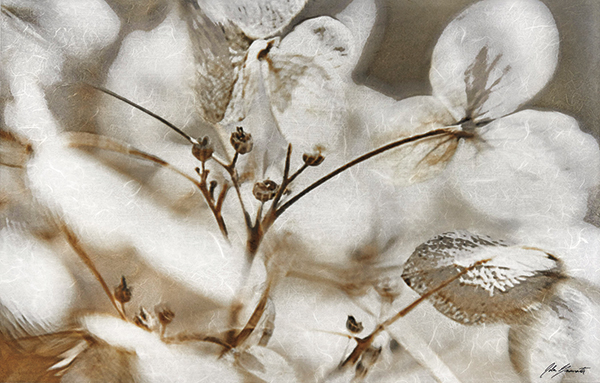
SB: How do you determine your direction for creating new themes?
Robin Hill: If an idea hits me in the gut in the right spot then I pursue it. The market does not come into consideration until the direction of the work is clearly established.
Sean Bagshaw: As a landscape and nature photographer my motivation in photography is mostly personal and experience based. I explore landscapes that I find beautiful and inspiring and then simply respond and react to what I see and experience. In that way, the environment is the biggest factor in determining the themes in my work. From the beginning my work has been about communicating a sense of exploration, adventure, beauty, drama, and mystery.
Cheyenne L Rouse: My “theme” I guess you could call it is: “Photographing the Legend, the Lore and the Landscapes of the Great American West & Southwest.” That tagline keeps me focused on my subject matter. I shoot just about anything that makes up this unique part of the United States, from rusty trucks to cowboy culture to Native American culture (past and present) to nostalgia to landscapes and more.
David Bowman: I follow my obsessions to photograph what truly interests me. And I recently completed a rigorous MFA program, which was a great way to refine my vision—and begin teaching.
John Granata: Personally, I do not think about it. Creativity is something I need to leave alone to flourish but at any given moment at least one to two ideas are developing in my head. For the most part it is a long thought process where I have created something many times before I physically attempt it. Currently I’m hoping to attempt some work I’ve been thinking about since 1995. I feel my work is a physical representation of my thoughts and feelings.
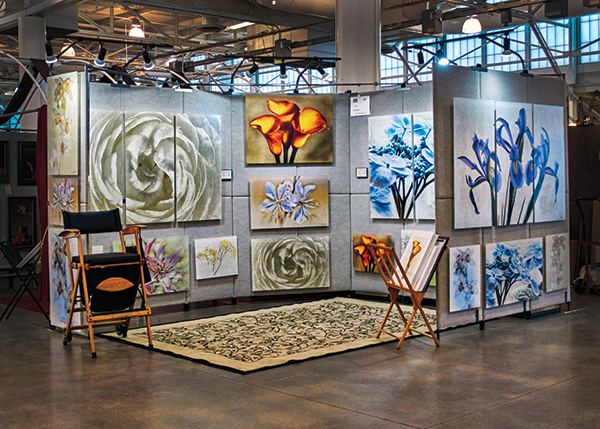

SB: Fine art is published as décor, art books, fine art prints—even greeting cards. What kinds of clients do you pursue for business?
David Bowman: Although I primarily work as an assignment photographer, I prefer to shoot personal work with large format camera equipment and make photographs with the gallery wall in mind.
John Granata: My work is focused on the higher end. To some extent I feel greeting cards, posters, and puzzles are garbage that artists produce to eat but hunger is a strong motivator. I have been fortunate that I haven’t had to explore those avenues yet.
Robin Hill: Corporate fine art. It is the Holy Grail to be commissioned to do a signature artwork for a major building.
Cheyenne L Rouse: I market my photography to current clients and art show patrons who are looking for unique pieces for their home or office. All of the photographs that I exhibit at my shows are signed and numbered limited editions.
Sean Bagshaw: I pursue all of those categories of clients. I have found that with the increase in popularity of photography as a pastime that it has become more challenging to sell fine art prints to individuals. Understandably, many photography enthusiasts these days prefer to take, print, and display their own photographs. However, I know fellow photographers who, with concerted effort, are finding new ways to do well with print sales. Most of my current clients are on the commercial side of things. I sell prints for décor in hotels, hospitals, offices, and restaurants. My images are often used in installations that take advantage of the new printing technologies, such as canvas, wall murals, backlit wall displays, and window mounts. I also work with clients who use my images in books, greeting cards, calendars, and even puzzles.


SB: What techniques do you think best market your fine art photography?
David Bowman: I find that winning contests and being published are great ways to get my work in front of people. Being part of National Geographic Creative also helps, as they have a fine art program for members.
Robin Hill: I believe in fostering close relationships with people who both love and buy fine art.
Sean Bagshaw: Since fine art sales are just one aspect of my business I don’t give it the kind of dedicated marketing attention that I could, or would need to if it was my only income stream. As I mentioned, I am fortunate to have established a respectable Internet footprint. Blogging, podcasting, social media, and contributing to photo-sharing sites are currently the main marketing I do.
Cheyenne L Rouse: For me and my business, social media has been the most successful. It drives clients to my art shows and helps build my brand.
John Granata: I believe that you have to go to the money. I participate in many art fairs (40+ a year) across the country and I don’t pretend to have a high opinion of myself. I need to put my work in front of people who may or may not be ready for an impulse buy.

SB: How would you advise photographers who wish to be represented by a gallery?
David Bowman: Figure out which galleries represent the kind of work you do, and go to portfolio events. Do everything you can to get your work in front of the right people.
Robin Hill: Think about a private dealer as a good alternative.
Cheyenne L Rouse: It is very difficult to get represented by a gallery with photography. Unfortunately, many in the fine art world do not consider photography art. Part of the reason I jumped at the opportunity to open my own gallery is because I was tired of hearing galleries say “no” to me—so I did it myself.
John Granata: Personally, I have had bad experiences with galleries who want to take advantage of me. I believe that resume or portfolio building experiences are “BS.” You should approach it like dating and test things out before the commitment.
Sean Bagshaw: I have had my work represented by several small galleries over the years, and I am currently working with one gallery in the town I live in. I’m sure representation from the right gallery could be lucrative. However, my perception is that it is challenging for smaller local galleries to be successful today. My advice would be to not count on making a living selling fine art photography with representation at one or two small galleries.
Resources
Sean Bagshaw: outdoorexposurephoto.com
David Bowman: bowmanstudio.com
John Granata: johngranata.net
Robin Hill: sidebyside.photoshelter.com
Cheyenne L Rouse: ancientlightphotos.com































